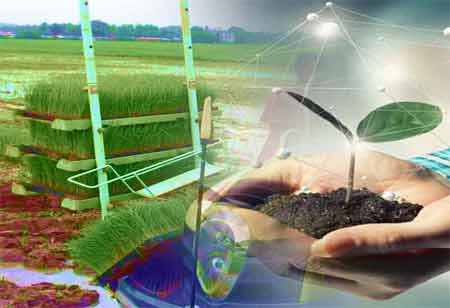Thank you for Subscribing to Agri Business Review Weekly Brief
Aquafarming Harmony: Balancing Nature, Utility, and Growth Horizons
Aquafarming currently stands as one of the fastest-growing sectors globally, actively addressing the challenge of food scarcity on the planet.

By
Agri Business Review | Thursday, January 18, 2024
Stay ahead of the industry with exclusive feature stories on the top companies, expert insights and the latest news delivered straight to your inbox. Subscribe today.
Aquafarming merges economic growth and job creation with advanced technologies, minimizing environmental impact. It's a transformative journey that balances nature, utility, and promising horizons for sustainable food production.
FREMONT, CA: Aquafarming currently stands as one of the fastest-growing sectors globally, actively addressing the challenge of food scarcity on the planet. With abundant water and land resources, implementing various aquafarming techniques holds the potential to ensure food security for both the present and the future. This versatile practice involves cultivating various aquatic organisms in open and captive conditions, contributing significantly to worldwide sustainable food production.
Mariculture: The application of aquafarming is wide-ranging. It has been exploiting the vast riches of the water since ancient times to catch fish and other aquatic creatures like shellfish, seaweed, and marine pearls. It is simply defined as the culture of aquatic creatures in the ocean or the raising of aquatic species in the water of the ocean.
Inland Fish Farming: A new type of aquafarming is implied by people's usage of crops with arid terrain. Freshwater species are the only aquatic organisms that can be farmed using this method. The best types of farming include integrated fish farming, mixed culture, and polyculture. Diverse approaches, including intensive, semi-intensive, and super-intensive, are recommended to profit handsomely from the inland fish farming industry.
Recirculating Aquaculture System: With the introduction of this growing system, indoor fish farming has entered a revolutionary new phase. With recirculatory aquaculture, less space and water are needed than with other forms of fish farming. The primary focus of this farming technique is high fish stocking density and water recycling with the aid of biofilters and clarifiers.
Algaculture: The process of growing a variety of algae, such as phytoplankton, microphytes, and microalgae, for various industrial uses, is known as agriculture. Algaculture's many utilize as a valuable resource for fertilizer manufacture and biogas production are driving up demand for this growing industry. Showcasing its importance in tackling environmental and agricultural concerns, utilizing the potential of these algae improves agriculture operations through nutrient-rich fertilizers and also adds to sustainable energy solutions.
Hailed as the farming technique of the future, aquaponics involves the symbiotic coexistence of fish and plants within a single unit. This creative approach maximizes efficiency by minimizing the use of natural resources. Plants use fish waste as fertilizer, and plants filter and purify fish water. This integrated system allows a harmonic and resource-efficient approach to agriculture by maximizing yields while promoting sustainability.
Aquaponics: Aquaculture and aquaponics are useful because they can safely meet the need for food while making the best use of available resources. These activities improve the socioeconomic standing of the communities they are implemented in by acting as catalysts for the creation of jobs. Furthermore, their application helps to lessen pollutants in the environment. Through the skillful integration of ecological advantages with economic and social benefits, aquaculture and aquaponics are essential elements in cultivating a sustainable and harmonious agricultural-environment interaction.
The utility of aquaculture and aquaponics lies in their ability to securely address food demand while optimizing natural resource use. These practices serve as catalysts for employment generation, elevating the socioeconomic status of the communities involved. Additionally, their implementation contributes to the reduction of environmental pollution.
By effectively combining ecological with economic and social advantages, aquaculture and aquaponics emerge as integral components in fostering sustainable and harmonious relationships between agriculture and the environment.
Aquafarming's reach beyond conventional limits, benefiting various aspects of the environmental and economic spheres. It promotes tourism by hosting events such as fishing tournaments and greatly increases the country's economy. Opportunities for unique economic endeavors, such as the processing and preservation of fish byproducts, are created by aquafarming. Furthermore, it relieves the strain on natural resources, which is essential for maintaining biodiversity. Because of these varied contributions, aquafarming becomes apparent as a vibrant industry that supports ecological balance and sustainable practices in addition to economic growth.





